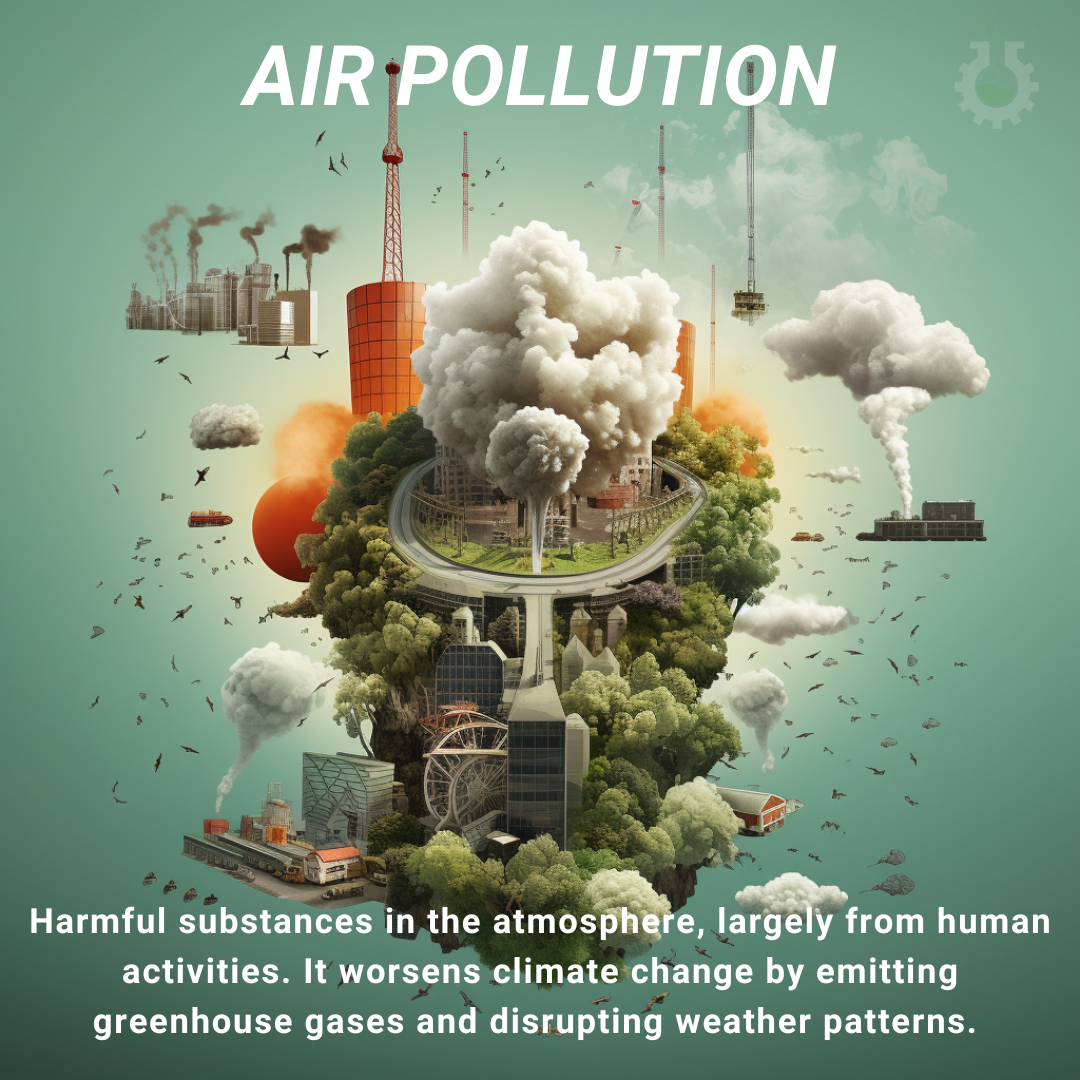September 8, 2023
Climate Change Poster Collection of the Day – Air Pollution
Book a Demo
Today’s Climate Change Poster Collection highlights Air pollution, a global issue that has increasingly drawn the attention of individuals, governments, and organizations worldwide. It refers to the release of harmful pollutants into the air, having profound effects on human health and the environment. The major pollutants that contribute to this problem are particulates, sulfur dioxide, carbon monoxide, nitrogen oxides, volatile organic compounds (VOCs), and hazardous air pollutants (HAPs).
The sources of these pollutants are diverse and span both natural phenomena and human activities. Natural phenomena, such as volcanic eruptions, are uncontrollable sources of air pollution. On the other hand, human activities like industrial production, deforestation, and combustion of fossil fuels are significant contributors that can be regulated and corrected.
The health issues caused by air pollution are multifaceted and severe. They range from respiratory problems, heart disease, to cancer, and can have both acute and long-term effects. These effects are seen globally, affecting people of all ages and backgrounds, with the most vulnerable being children, the elderly, and those with pre-existing health conditions.
The environmental impact of air pollution is equally alarming. It leads to issues like acid rain, eutrophication, and global climate change. Acid rain, caused by sulfur dioxide and nitrogen oxides, damages forests and bodies of water. Eutrophication, caused by excess nutrients, leads to dense growth of plant life in water bodies, resulting in the death of animal life due to the lack of oxygen. Global climate change, driven by increased greenhouse gas emissions, leads to a warming planet, causing a rise in sea levels, extreme weather events, and loss of biodiversity.
The risk of air pollution is a function of the hazard of the pollutant and the exposure to that pollutant. It can affect individuals, groups, or entire populations, with urban populations and those living in industrial regions being particularly at risk due to their increased exposure.
To tackle this mounting issue, several measures have been proposed and implemented to reduce air pollution. Legislation aimed at curbing emissions, the adoption of renewable energy sources, reducing vehicle use, and implementing strict regulations on industries are some of the strategies being applied. The transition to cleaner energy sources, such as wind, solar, and hydro, is particularly promising.
Lastly, education and awareness about the causes, effects, and solutions to air pollution play a crucial role in combating this issue. The more people understand the issue and its implications, the more they can contribute to its solution. Whether it’s through individual actions like reducing energy consumption and vehicle use or through collective action like supporting clean energy policies, every effort counts in the fight against air pollution. As we continue to develop and innovate, it’s crucial that we do so sustainably, keeping in mind the health of our planet and its inhabitants.
Discover an inspiring collection of climate change posters.



